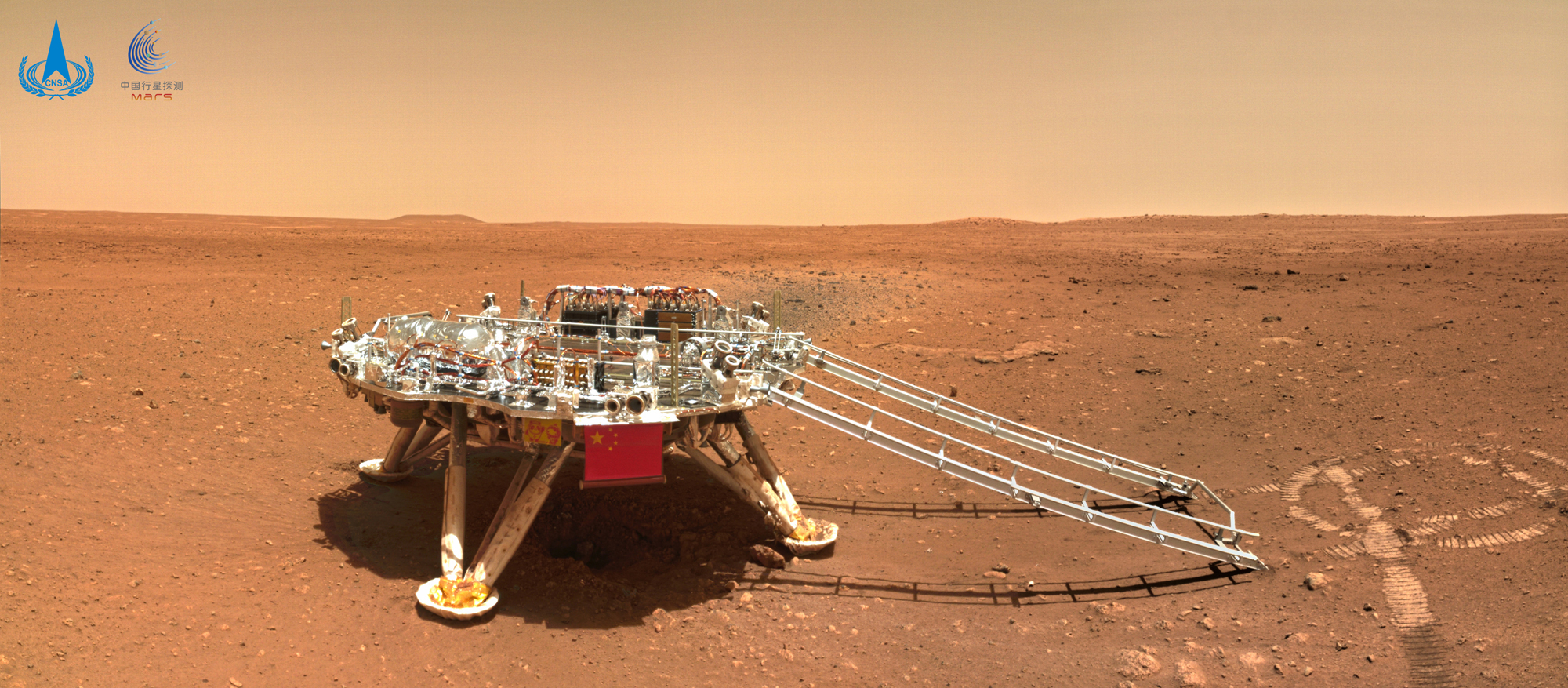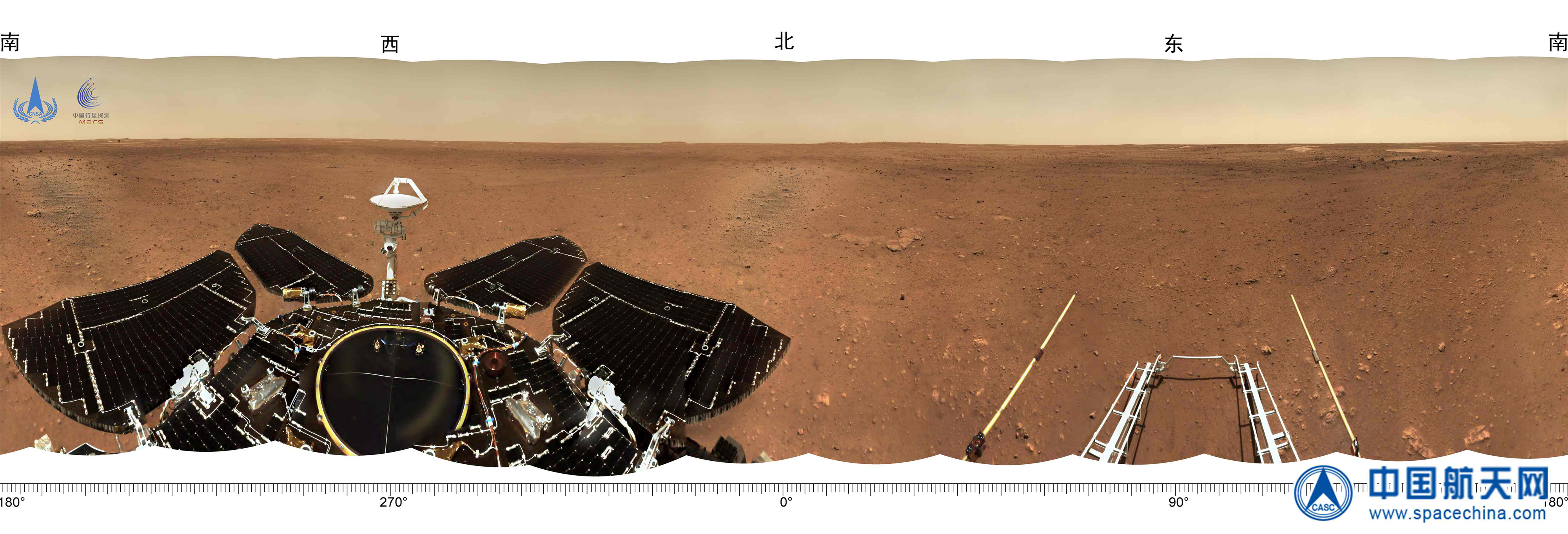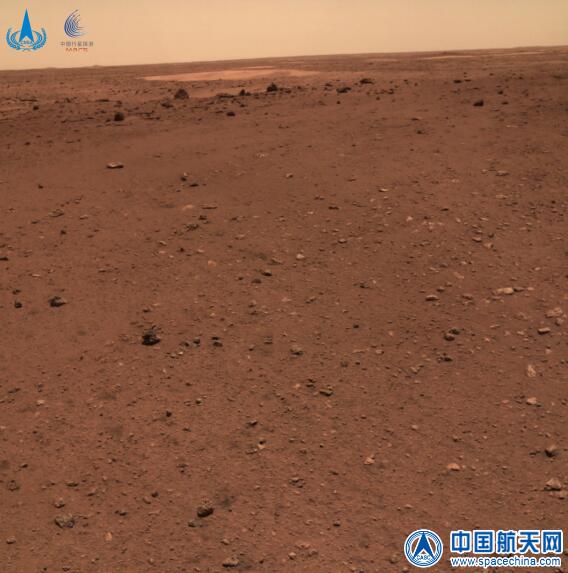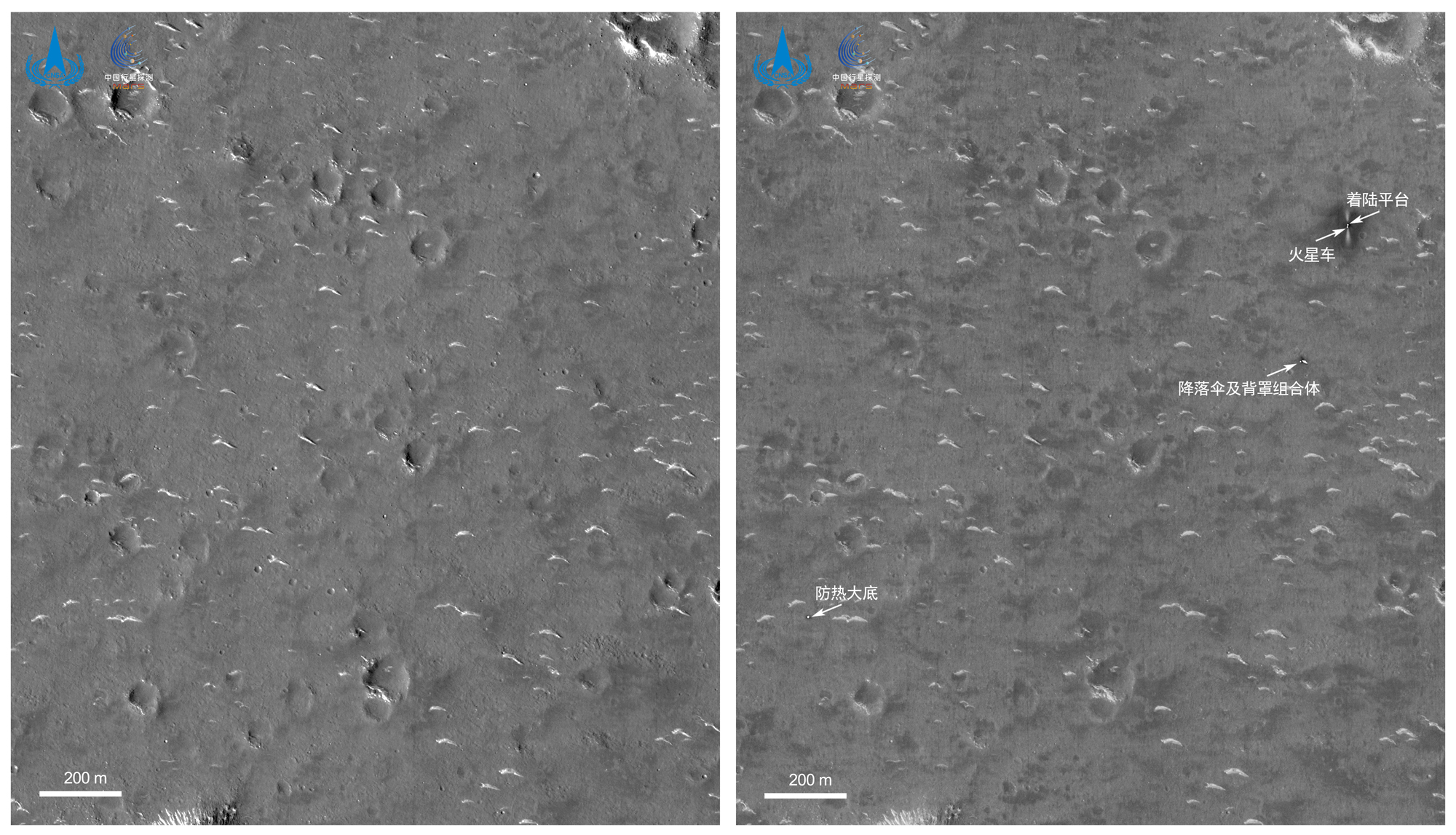China's Mars rover Zhurong just snapped an epic self-portrait on the Red Planet (photos)
Every Mars rover should carry a selfie camera.
China's Zhurong rover, which landed on Mars on May 14, has sent a new batch of images to Earth — including a "family photo" featuring the rover together with its rocket-powered landing platform posing for a camera on the rock-covered surface.
The rover took this selfie by dropping a camera attached to its belly about 10 meters (32 feet) away from the landing platform, then positioning itself next to the landing platform, Chinese space officials said. The camera wirelessly transmitted the picture to the rover, which then sent it to Earth via the Tianwen-1 orbiter.
Related: China's Tianwen-1 Mars mission in photos
The China National Space Administration (CNSA) released the image together with a 360-degree panoramic view of the landing site that Zhurong took with its navigation terrain camera while it was still atop the landing platform. The CNSA also released a photo of the landing platform taken from about 20 feet (6 meters) afar.
The images show the flat terrain of the huge Martian plain Utopia Planitia covered with small rocks.
The 530-lb. (240 kilograms) Zhurong rover, named after an ancient fire god from Chinese mythology, is part of China's Tianwen-1 mission, which launched in July 2020 and arrived in Mars orbit this past February. On May 14, Zhurong and the landing platform separated from the Tianwen-1 orbiter and touched down, pulling off China's first-ever Mars landing.In addition to high-resolution cameras, the rover is fitted with a subsurface radar instrument, a multi-spectral camera and surface composition detector, a magnetic field detector and a weather monitor.
The rover is expected to spend at least 90 days mapping the area, searching for signs of water ice, monitoring weather and studying the surface composition.
Get the world’s most fascinating discoveries delivered straight to your inbox.
The Tianwen-1 orbiter, which relays data from Zhurong but also gathers scientific data about the planet's surface and atmosphere, is expected to operate for at least one Mars year, which is 687 Earth days
Earlier this week, the CNSA released images from the Tianwen-1 orbiter capturing the Zhurong rover and the landing platform on the surface of Mars.
In the images, a dark area can be seen surrounding the landing platform, which might be a result of the rocket engine firing during the landing, Chinese officials said in a statement. The image also shows bright stripes probably formed by fine dust when the landing platform released residual fuel. The back cover of the entry capsule and the jettisoned parachute can be seen as bright spots at the center of the image. The heat shield can also be seen in the lower left section.
The HiRISE camera aboard NASA's Mars Reconnaissance Orbiter also spotted Zhurong, the landing platform and the duo's landing hardware this week.
With the Zhurong landing, China made history as only the second nation to successfully land on Mars after the U.S.
Follow Tereza Pultarova on Twitter @TerezaPultarova. Follow us on Twitter @Spacedotcom and on Facebook.









